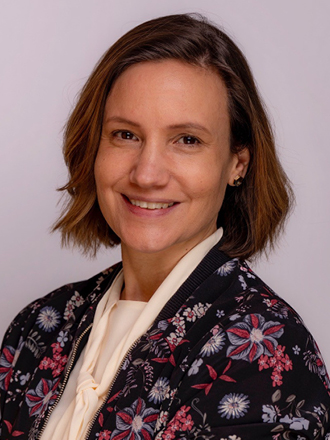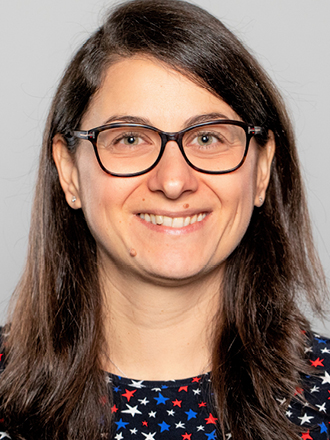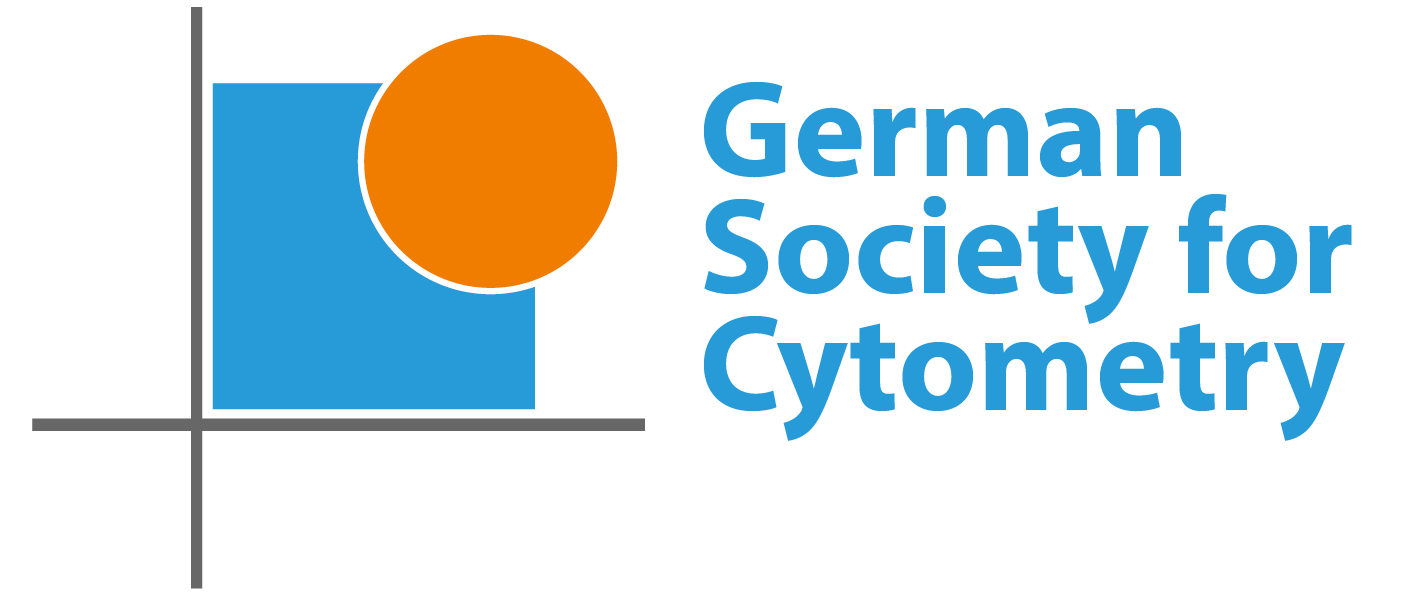Microbiology
Microbiology Session
Thursday, September 21st, 2023, at 11:00 am
Chairs: Lisa Budzinski & Christin Koch
Bacterial communities have a profound role in human health, environmental systems and industrial processes, which relies on their cellular function and properties – therefore this years’ microbiology session again explores cutting edge technologies in microbial single-cell analysis.
The genetic diversity of microbiomes has been assessed extensively by sequencing technologies, but to elucidate the function of bacterial cells it requires different technological approaches. Single-cell analysis tools enable the investigation of bacterial metabolism such as adaption processes and are essential to contextualize microbial communities in their hosts or environments. Shifting from bulk to single-cell information brings potential of targeted control of microbial processes and allows to understand taxonomic shifts in bacterial communities functionally.
This session will highlight innovative approaches and applications contributing to the understanding of microbiomes in regards to composition, function and management.

Probing microbiome function using single-cell chemical imaging
Affiliation
University of Southhampton, Southhampton, United Kingdom
Abstract
Humans and other animals host diverse communities of microorganisms that play fundamental roles in their physiology and health. In order to understand how microorganisms interact with and shape the environments that they inhabit, analysing the phenotype of cells in their native habitat is essential. Stable isotope probing (SIP) is a key tool for this purpose, as it enables tracking of isotopically-labelled atoms into microbial biomarkers and/or cells of interest. We have developed and applied new SIP techniques that exploit non-destructive Raman microspectroscopy to enable the detection of stable isotopes in single cells of bacteria. These techniques can be coupled with methods to specifically identify the labelled bacteria, i.e., to link identity to function and activity. By combining heavy water as a general tracer for metabolic activity, Raman-activated cell sorting and mini-metagenomics we were able to identify a consortium of gut commensal microbes able to reduce pathogen colonization. More recently, we developed a novel high-throughput approach to combine stimulated-Raman scattering (SRS) with fluorescence in situ hybridization (FISH), which is 10-100 times faster than previous approaches, thereby enabling high-throughput single-cell SIP for the first time. We exploited SRS-FISH to identify individual responses of the human gut microbiome to nutrients and pharmaceutical drugs, as well as to detect drug bioaccumulation with unprecedented resolution. Overall, we show that single-cell Raman-SIP approaches are powerful for directly demonstrating microbial functions within complex communities.
Biosketch
Fatima C. Pereira is a Lecturer at the University of Southampton, United Kingdom. Her research combines single-cell activity methods, microspectroscopy, molecular biology and next-generation sequencing to investigate how diet and medication shape the function of the gut microbiome. Fatima obtained her PhD in Molecular Biology from the NOVA University of Lisbon in Portugal, where she investigated the molecular bases of pathogenesis of the gut pathogen Clostridioides difficile. This motivated her to better understand how resident microbes modulate resistance to infection, and she then moved to the University of Vienna, Austria, with a Marie-SkLodowska-Curie (MSCA) Postdoctoral Fellowship to investigate mechanisms of microbiota-mediated colonisation resistance. As a Senior Postdoctoral fellow, Fatima secured major funding from the Austrian Science Fund and the Portuguese Research Agency to investigate the mechanisms through which the microbiomes of mammals (human and mice) and other vertebrates (fish) modulate gut inflammation, nutrition and growth. In August 2022 she moved to the University Southampton, UK, where she established her research group.

Hunting systems for typical and atypical glycan processing in gut microbiomes, one cell at a time
Affiliation
Faculty of Chemistry, Biotechnology and Food Science, Norwegian University of Life Sciences, Ås, Norway
Abstract
The community of microbes inhabiting the gastrointestinal tract includes a large variety of bacterial species that collectively influence numerous aspects of host health and nutrition. Firmicutes and Bacteroidetes phyla are typically dominant, with specific symbiotic members supplying an arsenal of carbohydrate-active enzymes for the depolymerization and fermentation of otherwise indigestible complex carbohydrates to short-chain fatty acids. This talk will present some of our recent research, which utilizes methodological toolsets that combine traditional culturing, meta-omics (including next-generation sequencing and functional multi-omics), biochemistry and enzymology, to fully elucidate enzymatic pathways that microbes employ for the utilization of nutrients consumed by the host. This includes typical plant-derived polysaccharides, such as β-mannans, and atypical glycans such as the food additive xanthan gum. In particular, coupling of detailed knowledge of microbial saccharolytic mechanisms to unique structural features of β-mannans has allowed us to design intervention strategies to selectively engage beneficial microbes at species level. Additional application of multi-omics has enabled visualization of the impact of β-mannans on the gut microbiota composition and functions, unveiling interactions between key players in degradation of this fiber directly in complex endogenous animal microbiomes and elucidating mechanisms by which these microorganisms affect host biology. We demonstrate that a multi-faceted approach is needed for deciphering and implementing efforts to enhance host health and minimize disease by manipulating gut microbial composition and metabolism.
Biosketch
Sabina Leanti La Rosa received her PhD in Molecular Microbiology from the Norwegian University of Life Sciences in 2014. She then trained with Dr Barbara E. Murray at the University of Texas Health Science Center in Houston (USA), investigating the genetic basis of pathogenicity of clinically relevant gram-positive pathogens. After that, she moved back to Norway to begin work on gut microbiome research, focusing on the enzymatic mechanisms through which gram-positive gut commensals degrade food and feed components. Since 2022, she is an Associate Professor in Microbiology at the Norwegian University of Life Sciences. Sabina’s current research applies multi-omics approaches and enzymology to investigate mechanisms by which gut commensals utilize complex glycans, including hemicellulosic substrates and food additives, with diverse interests on CAZymes discovery, biotechnology applications and prebiotic-based modulation of human and animal gut microbiomes.
Doreen Reichert
Impact of long term 2,3,7,8-tetrachlorodibenzo-p-dioxin treatment on gut microbiome composition and glycosylation patterns in male and female C57BL/6 mice analyzed by flowcytometry
IUF – Leibniz Research Institute for Environmental Medicine, Düsseldorf, Germany
Toxic compounds can affect the microbiota of the gut directly or via liver toxicity. Microbiota changes can be studied by 16S sequencing, or by multi-parameter flow cytometry using, e.g., scatter characteristics and DNA-dyes. According to literature reports, 2,3,7,8-tetrachlorodibenzo-p-dioxin (TCDD), a compound notorious for its (immune-)toxicity, changes the microbial pattern in the gut. However, high TCDD doses were used, which might cause liver toxicity, resulting in bile acids changes. We asked here, if TCDD affects the gut microbiome also at very low doses in the absence of liver damage. Male and female C57BL/6 mice were orally administered 0.1µg/kg TCDD for 12 weeks (1000 times less than the LD50 in mice). This dosing was harmless for the gut and had only minimal impact on the liver in male mice. Next, we assessed the microbial patterns in fecal pellets and cecal samples of TCDD-exposed mice. 16S sequencing revealed no differences. Surprisingly however, analysis by flow cytometry identified significant differences in the microbiota community profile upon TCDD exposure (in female mice). While 16S identifies microbes by the genome, flow cytometry has the advantage that it might pick up in addition phenotypic changes such as glycosylation or a tendency of bacteria to stick together. We therefore stained the bacteria with a panel of fluorescent sugar-specific lectins. Indeed, this unveiled significant alterations in the glycosylation patterns of TCDD-treated mice versus controls. Again, this was more pronounced in female than in male mice. Dysregulation of glycosylation patterns by toxic compounds is a novel finding, which has implications for the health of the host because glycoconjugates govern biofilm forming, infectious behavior of bacteria, and host immune responses. We posit that changes in glycosylation and bacterial community structure are relevant parameters in assessing the toxicity of chemical compounds in the gut in male and female mice.
Juan Lopez Galvez
Development of an Automated Online Flow Cytometry Method to Quantify Cell Density and Fingerprint Bacterial Communities
Helmholtz-Zentrum für Umweltforschung, Department of Environmental Microbiology, Leipzig, Germany
Cell density is an important factor in all microbiome research, where interactions are of interest. It is also the most important parameter for the operation and control of most biotechnological processes. In the past, cell density determination was often performed offline and manually, resulting in a delay between sampling and immediate data processing, preventing quick action. While there are now some online methods for rapid and automated cell density determination, they are unable to distinguish between the different cell types in bacterial communities. To address this gap, an online automated flow cytometry procedure is proposed for real-time high-resolution analysis of bacterial communities. On the one hand, it allows for the online automated calculation of cell concentrations and, on the other, for the differentiation between different cell subsets of a bacterial community. To achieve this, the OC-300 automation device (onCyt Microbiology, Zürich, Switzerland) was coupled with the flow cytometer CytoFLEX (Beckman Coulter, Brea, USA). The OC-300 performs the automatic sampling, dilution, fixation and 4′,6-diamidino-2-phenylindole (DAPI) staining of a bacterial sample before sending it to the CytoFLEX for measurement. It is demonstrated that this method can reproducibly measure both cell density and fingerprint-like patterns of bacterial communities, generating suitable data for powerful automated data analysis and interpretation pipelines. In particular, the automated, high-resolution partitioning of clustered data into cell subsets opens the possibility of correlation analysis to identify the operational or abiotic/biotic causes of community disturbances or state changes, which can influence the interaction potential of organisms in microbiomes or even affect the performance of individual organisms.
Daniel Kage
Label-free flow-cytometric bacteria sorting with angle-resolved scattered light signals
German Rheumatism Research Center, Berlin, a Leibniz-Institute – Flow Cytometry Core Facility, Berlin, Germany
The analysis and sorting of bacteria with conventional flow cytometers is challenging for two main reasons. First, few reagents for targeted staining of bacteria are available which makes it more difficult to specifically identify types and subsets as compared to eukaryotic cells. Second, with the small size of bacteria, most conventional flow cytometers operate at their detection limit since their optics are designed for larger cells.
To address these issues, we designed a flow cytometer comprising (1) signal processing electronics that acquire and store the whole time-resolved signal pulse shapes during particle transit through the laser beam, (2) optical components providing a reduced laser spot size for improved sensitivity, and (3) fiber arrays that allow for high-resolution scattered light detection at a multitude of scattering angles. Object classification and sorting is based on assigning the wavelet transform coefficients of the time- and angle-resolved signal pulses to clusters that were defined by the preceding analysis of defined cell populations.
With this setup, we were able to distinguish and sort bacteria types solely based on time- and angle-resolved scattered light pulse shapes, without the need for fluorescent labels. Even bacteria with similar shapes, e.g. rod-shape (E. coli and Achromobacter spp.) that were indistinguishable in the scattered light signals obtained with conventional instruments could be clearly separated.
